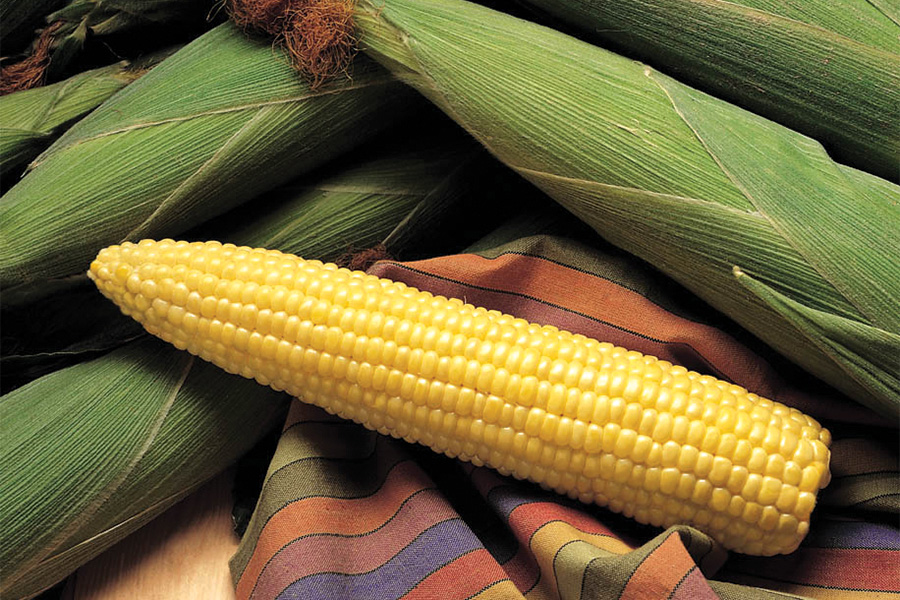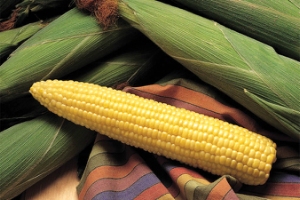
Honey Select
A Syngenta AAS winner with similar genetic type to Serendipity only yellow kernels. Easy to grow, good vigor, no isolation needed, high sugars.
| V04012 : Honey Select | ||
|---|---|---|
| Treatment | * Pkg Size | ** Price (USD) |
| Cruiser | 2.5M seeds | $24.25 |
| Cruiser | 10M seeds | $89.50 |
| Cruiser | 25M seeds | $210.00 |
| Cruiser | 100M seeds | $795.00 |
|
* M = 1,000 ** US customer prices shown in USD. *** Canadian customers, please log in to see CA prices in USD. |
||
Attributes

Sweet Corn Guide
The Rupp Seeds Sweet Corn Guide will help both beginner and experienced growers alike maximize their full potential in producing one of the most popular vegetables grown in the United States.
Growing Tips
- Planting
-
Plant seeds 8 - 12 inches apart on 30 inch rows to achieve optimum yield. Seed depth should be ¾” - 1½” depending on soil conditions, and genetic type. Plant when soil temperature is 60º F plus. Planting in blocks will also help increase uniformity in pollination.
Planting Guidelines - Sweet CornApproximate Seeds per Pound:2,700 - 6,000Seeding Rate per Acre by Weight:4.5 - 6.7 lbsSeeding Rate per Acre in M (1,000):18.2 - 27.3 MSeeding Rate Seeds per 1,000 foot of Row:1,000 - 1,500Seed or Plant Spacing In Row:8 - 12"Seed or Plant Spacing Between Rows:30"Seed or Plant Spacing Depth:.75 - 1.5"Recommended Soil Temperature:60 - 75°FDays to Germination:7 - 10
- Seeding Rate
-
18,000 - 22,000 seeds per acre or one seed every 8 - 12 inches. To achieve this singulation use a finger or air seed delivery system.
- Management
-
Be sure to read the Managing Insects in Sweet Corn page in our catalog for additional information. Scout field every 7 days to check for insect, weed, and disease pressure. For identification of weeds, insects, and diseases, consult your local extension office or go to the Midwest Vegetable Production Guide.
- Isolation
-
For all high quality sweet corn varieties, maintaining an isolation is required to protect the high sugar and flavor characteristics of the sweet corn as cross pollination from other types of sweet corn or from different types of corn will result in starchy kernels.
SE/Synergistic types and SH2/Improved Super Sweet types should be isolated both from each other and from other types of corn including field corn, popcorn and ornamental corn.
An isolation can be achieved either by distance or by a difference in maturity. Preferable isolations would require 700 – 1000 feet distance from other corns, or 10 – 14 days difference in maturity between varieties.
- Relative Maturity
-
Sweet corn maturities are publicized as days to relative maturity. This information comes from supplier data, as well as our trial observations in the Midwest. Prolonged excessive heat or cool temperatures can cause maturity dates to fluctuate to some degree . Monitor your crop through the growing season in order to pick at optimum freshness.
- Harvest
-
Harvest sweet corn when the end kernels of the ear feel developed. Approximately 21 - 25 days after half silk. Sample sweet corn to ensure quality.
- Storage
-
Pre-cool cob temperature to 50ºF. After pre-cooling store at 34ºF and 95% humidity.

